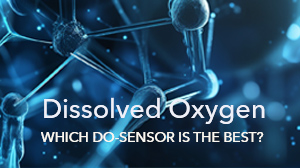8/1/2024
| Dr. Klaus Reithmayer
Dissolved oxygen is mainly determined in connection with environmental conditions, but there are also technical applications where it is measured. Find out from our expert which sensors you need for this.
Dissolved Oxygen Measurement in Environmental Analysis

Oxygen is often determined in surface waters, and three sensors are available here: CellOx® 325, DurOx® 325 and the FDO® 925.
All three sensors measure the dissolved oxygen in this application with good (DurOx®) or even high accuracy like CellOx® and FDO, so there are other criteria to consider.

CellOx® 325
CellOx® and DurOx® are electrochemical analog sensors, they are exclusively wired. Electrochemical sensors have been somewhat on the retreat since the introduction of optical oxygen measurement, but they certainly have their justification.
The CellOx® is a very precise, fast-responding probe that can be easily used for on-site measurements. It is also suitable for oxygen measurements of all kinds in the laboratory but requires inflow by stirring. With cable lengths of up to 6 m, measurements can also be taken in the open field of footbridges and bridges.
The DurOx® 325 is somewhat less sensitive to inflow with the screw-on protective cage and the thicker membrane, it is used, for example, in sewage treatment plants, fish farming and other aquaculture. There is only a cable length of 3 m here.
The StirrOx® G is a special case in water analysis. It is intended for BOD (Biochemical Oxygen Demand) measurement. For this purpose, it has an electrically driven stirring paddle that provides both the necessary flow and mixing of the sample. It is intended exclusively for laboratory use.
In principle, the FDO® 925 is suitable for all measurements in the field as well as in the laboratory.
It is available in three versions, two fixed-cable versions and a plug-in head version. This means that it can be connected to cables with lengths of up to 100 m as well as operated with radio modules and into a multi-parameter probe. The protective cage protects the replaceable membrane. Its measurement range includes 0.000 mg/l up to and including 20.00 mg/l or 0.0 to 200 % air saturation.
A special feature is the sensor cap with a built-in chip, which contains the factory calibration and transmits it automatically.
Read more in our other blog articles about dissolved oxygen measurement: